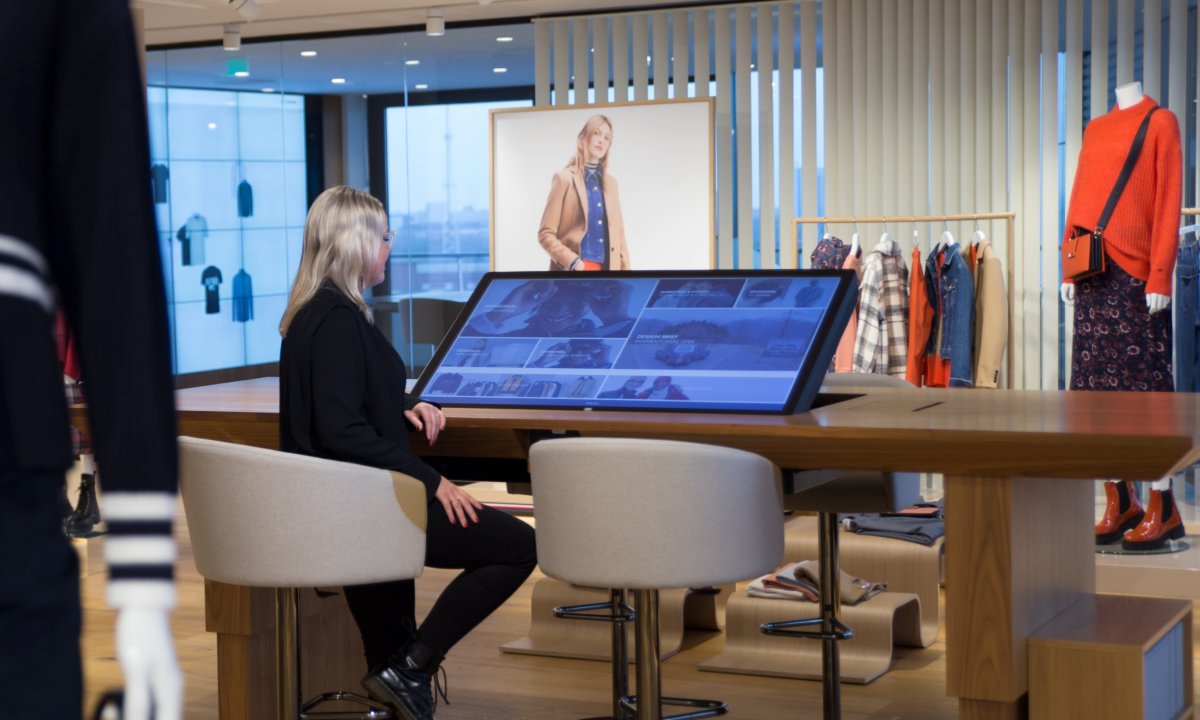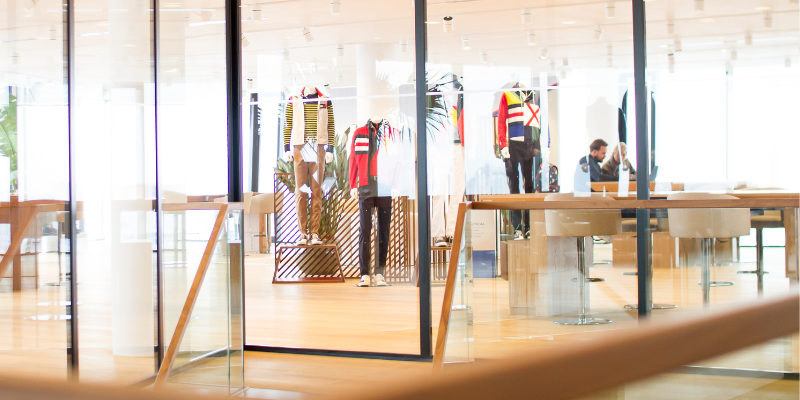B2B Sales are one of the fashion industry’s biggest revenue generators, with some brands reaching over 70% revenue via this channel. Even with the recent increase in D2C during the pandemic, the last few months are revealing wholesale once again as a key part of fashion brands' channel strategy.
But a paradigm shift needs to take place, prioritizing efficiency over volume. Consumers are scrutinizing how brands operate and how much waste they generate, so sheer volume shouldn’t be a top priority anymore. Instead, the industry needs to change its perception of wholesale from a volume generator to a brand positioning enhancer.
With digital and virtual showroom solutions everywhere, BCG suggests that brands should focus on defining the purpose that brings people and technology together to maximize the value generated by bringing digital tools into your workflow. In combining both forces, companies can become “bionic”, a term that’s used to define companies that mesh technologies and people to power growth, innovation, efficiency, resilience, and advantage.
For wholesale to be better, wholesale sales must spearhead the change. Better wholesale can only happen if we drive better sales. But how can we drive better sales?
Read more: 5 Things Successful B2B Sales are doing in Fashion
Measuring the Quality of your B2B Sales
Is it possible to improve my sales? Can my B2B sales grow? Does it even make sense to invest in wholesale? These may be some of the questions you're facing as you define your wholesale recovery plan. While it’s tempting to move to a direct-to-consumer approach, direct sales shouldn’t be seen as a silver bullet.
Wholesale can still be a powerful channel to drive your business in tandem with direct sales channels, giving brands a unique positioning advantage when done right. More so, brands with strong wholesale distribution can find better gains from increasing margins by optimizing their wholesale process than by doing a 180-degree turn to direct sales. To avoid past mistakes, you'll need to relook into your wholesale strategy and with that, how to measure the health of your wholesale sales. Direct versus wholesale? More direct AND wholesale.
As you progress with your new wholesale strategy, keep track of your results and assess where to center your efforts quarterly or seasonally. These are 8 metrics to help you measure the health of your wholesale sales now and during your journey to drive better sales:
-
Average Preparation Time
The average time your salesforce needs to prepare for a sales appointment. Preparation is fundamental to drive better sales and help customers choose the right items. Watch out! You want your preparation time to be short, but not too short as it may be an indication of sales teams not putting in enough time to build relevant proposals. -
Average Appointment Time
The time spent with a customer during a sales appointment (in-showroom or remotely). This time can vary heavily depending on how important your customer is, how big your collection is or how new your customer is to your brand. -
Seasonal Preparation Time
The total amount of time needed per discipline to start a sales season. This metric is a great way to measure collaboration across disciplines. Modern organizations see a more balanced split of time across marketing, merchandising, operations and sales, whereas traditional companies may see merchandisers and operations carrying most of the preparation time. Healthy sales organizations encourage all teams to be involved in sales, not just sales. -
Sample Ratio (Digital / Physical)
The ratio between physical and digital salesman samples produced. A healthy ratio sits between 3:1 and 4:1, roughly 20-25% of your total collection. This reduction can strengthen your seasonal story. Smart sample strategies also have an impact on your preparation and appointment times! -
Average Sales Price
The average retail price of the items sold to customers, broken down by category and by region/country. While this is not an indication of sell-out, it can provide an early indicator on the efficacy of brand and seasonal initiatives and surface customers driven by price and discounts. -
Content Conversion Rate
This metric helps marketers understand the effectiveness of the B2B content, learning which assets are used more and which ones are driving sales. Measure this from the first interaction to the last one across all orders so you can identify gaps in performance and refine your overall content hierarchy (brand drivers vs commercial drivers) -
Collection Efficiency
This metric looks at the items that have been added most and least to all orders in a season. This helps merchandisers identify best/worst performing items in a season. When looked across multiple seasons it can help refine the total option count offered to customers. -
Order alignment
The percentage of key items ordered by customers. Order fragmentation is a common challenge for traditional wholesale. Without pushing key items, customers have no incentive to buy into the items a brand proposes. This can become a supply chain challenge. The more diverse the orders to produce, the harder it is to optimize production, making it more challenging for brands to produce and deliver on time. In addition, the more fragmented orders are the less efficient it is for brands to keep a consistent message across channels.
| Metric | Type | Segmentation |
|
Average Preparation Time |
Time (hours) |
Country |
|
Average Appointment Time |
Time (hours) |
Country |
|
Seasonal Preparation time |
Time (weeks) |
Team |
|
Sample Ratio |
Digital : Physical |
Product Category |
|
Average Sales Price |
Currency |
Product Category Country |
|
Content Conversion Rate |
Percentage (%) |
Content type Country |
|
Collection Efficiency |
Percentage (%) |
Best Performing Worst performing Country Product Category |
|
Order alignment |
Percentage (%) |
Country |
Gathering data is just the beginning. Time for a Gap-Analysis.
These metrics will help you define a roadmap to lead wholesale beyond recovery. Use them to define milestones to reach better, healthier sales. More importantly, they can help you understand where the gaps are in your wholesale channel.
For instance, a long seasonal preparation time may be an indicator of multiple things: it can uncover weak collaboration between merchandising and marketing, it can indicate a content pipeline bottleneck due to sample availability. Once these gaps are uncovered, it's time to identify strategies to move the needle in the right direction. These are a few examples to help you start improving your sales organization:
- Create 3D Samples that are ready for Sales.
- Training sales teams digitally on new collections.
- Implement Sample Reduction Strategies.
- Digitize your Showroom Space to reduce appointment times further.
Wholesale's road to recovery is a critical step for most companies when returning to profit. Direct sales should be a priority, but so are B2B sales. The road ahead for wholesale is bumpy, but a strong direct/wholesale tandem will boost your growth and resilience far into the future.







